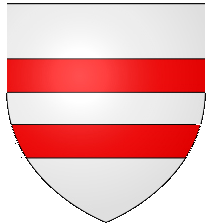





There’s not much to see now of the castle at Nevern. But for almost a century, a complex and dramatic story of treachery, prosperity, family feuds and celebrations was played out on this promontory in north Pembrokeshire.

1108: Norman colonists built banks and motte with wooden palisades and tower
Turmhügelburg. – Photo: Wy / Wikipedia
Forty years after the 1066 conquest of England, the Normans were still trying to subjugate Wales. Norman King Henry I authorized Robert FitzMartin to take control of Cemaes, the north of what is now Pembrokeshire. FitzMartin chose Nevern at which to build a stronghold for his forces.
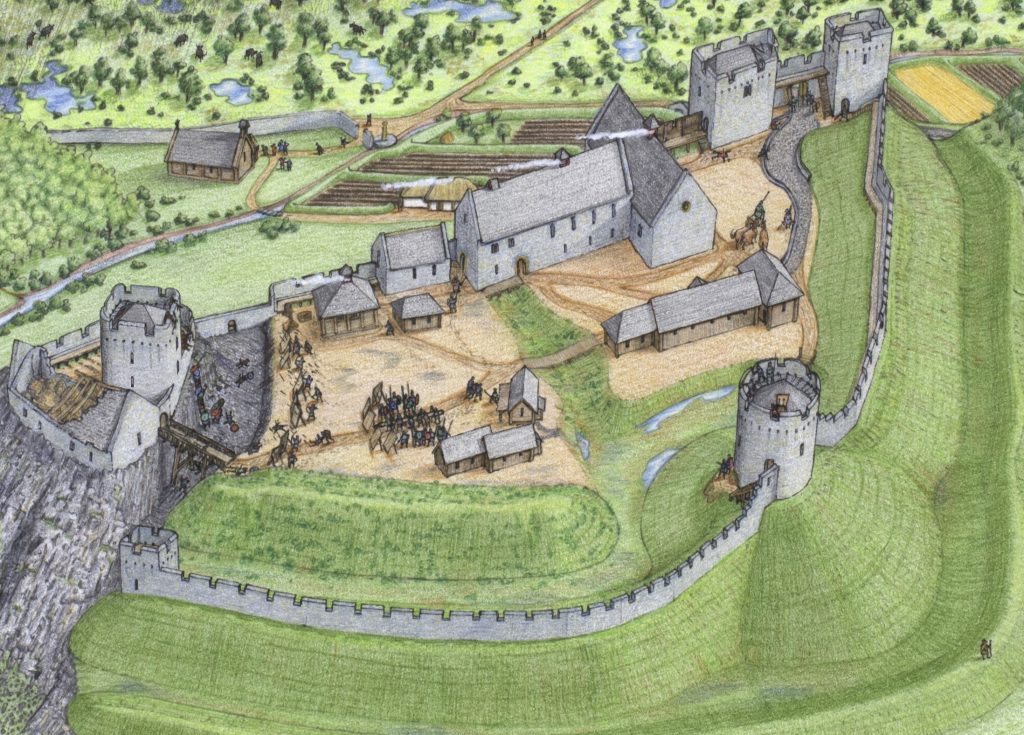
It became an important hub with impressive stone buildings, battled over by Welsh and Normans
Conquering the Welsh wasn’t easy. After Henry I died, the Normans were distracted by a long feud over the English crown. At the Battle of Crug Mawr in 1136, the Welsh decisively took back control, and occupied the castles at Cardigan and Nevern. Gruffydd, and later his son Rhys, were prominent leaders.
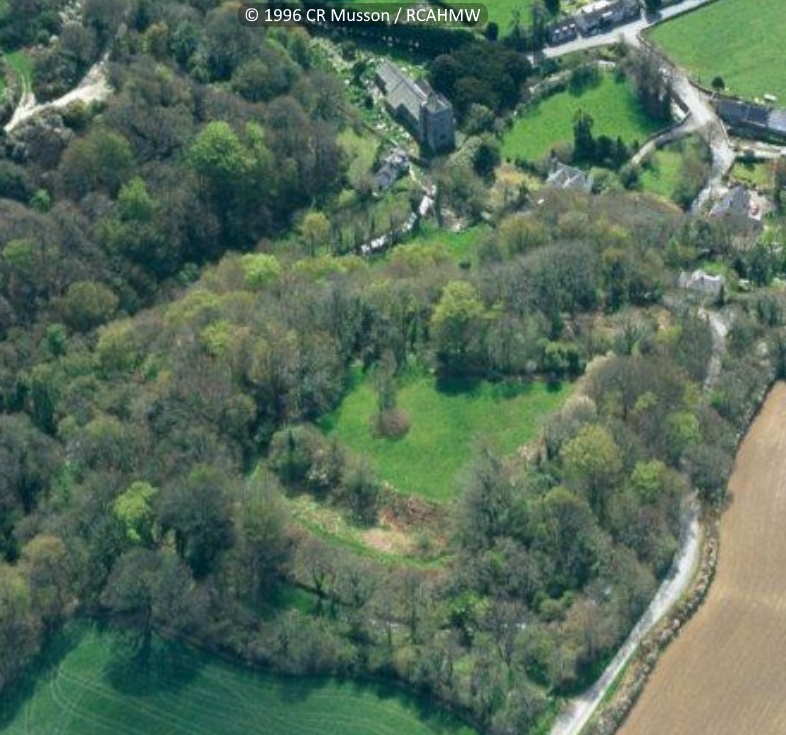
1196: Burned to the ground after ninety years. Has been farm land ever since
Eventually the Normans returned. An uneasy truce was established when William FitzMartin married Rhys’ daughter Angharad. But as soon as William went off to fight in the crusades, Rhys re-occupied Nevern. He and his sons then fought between themselves, finally destroying the castle.

1980: Nevern Community Council bought the site for the benefit of the community
Together with Pembrokeshire Coast National Park Authority, and Cadw (the Welsh Government’s historic environment service) Nevern Community Council has worked hard to look after the site and open it up for all to enjoy.
Join the Friends of Nevern Castle to help conserve and manage the site.

2008-2018: Archaeological digs uncover the varied history and changing structure of the castle
Dr Chris Caple of Durham University led the excavations. Many artefacts were discovered, providing a fascinating glimpse of life in the castle. The findings also showed the development of the buildings and walls and their construction by Norman and Welsh techniques.
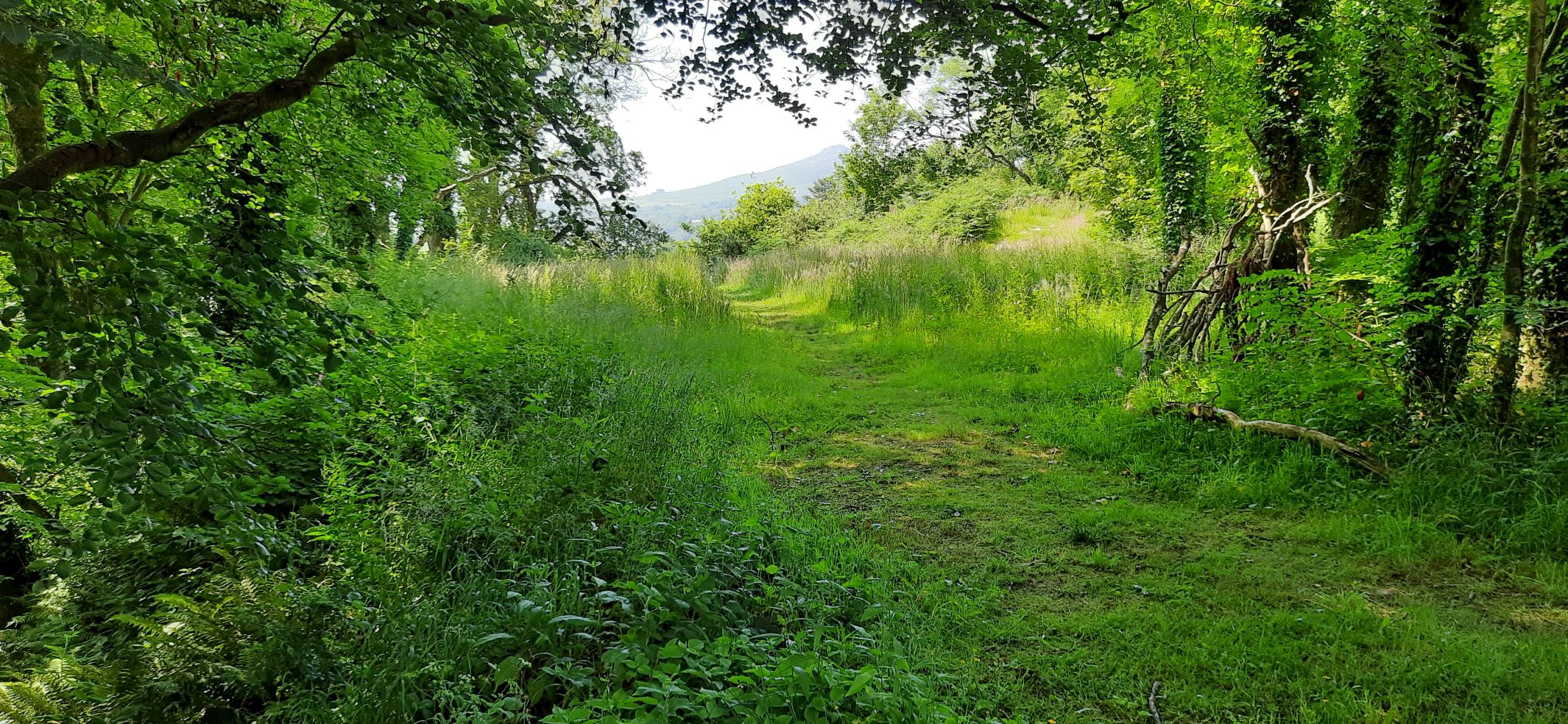
Now a space of peace and tranquillity
A few people have lived and farmed here over the centuries. Now it is home to walkers and wildlife. Little can be seen of the castle except for the banks, ditches, and the motte. Trees grow where there were once fine halls and commanding views over the countryside. Come and enjoy the peace; and remember our history!
What you can see today
The Square Tower

On a rocky outcrop at the eastern side of the castle, you can see the remains of a square stone tower, built in the later years of the castle’s life. This was the most secure part of the castle, with steep slopes all round. The deep ditch between the tower and the bailey was cut into the rock by hand; you can still see the pick marks.
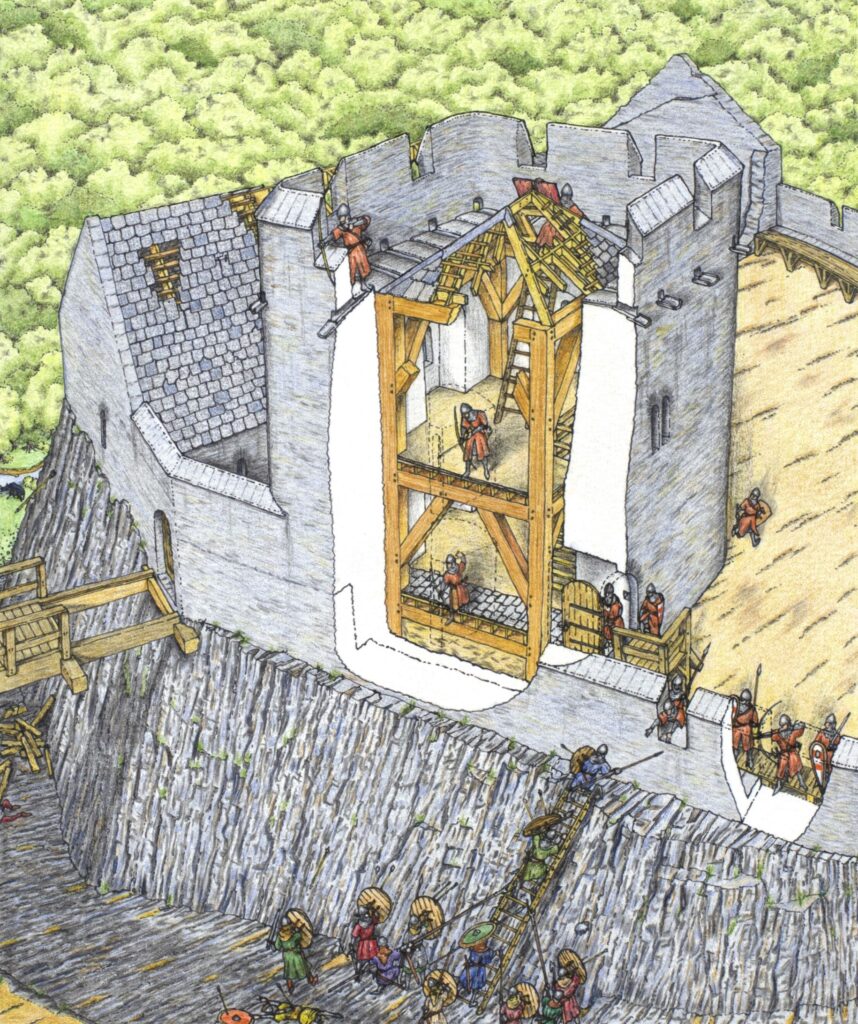
The bailey
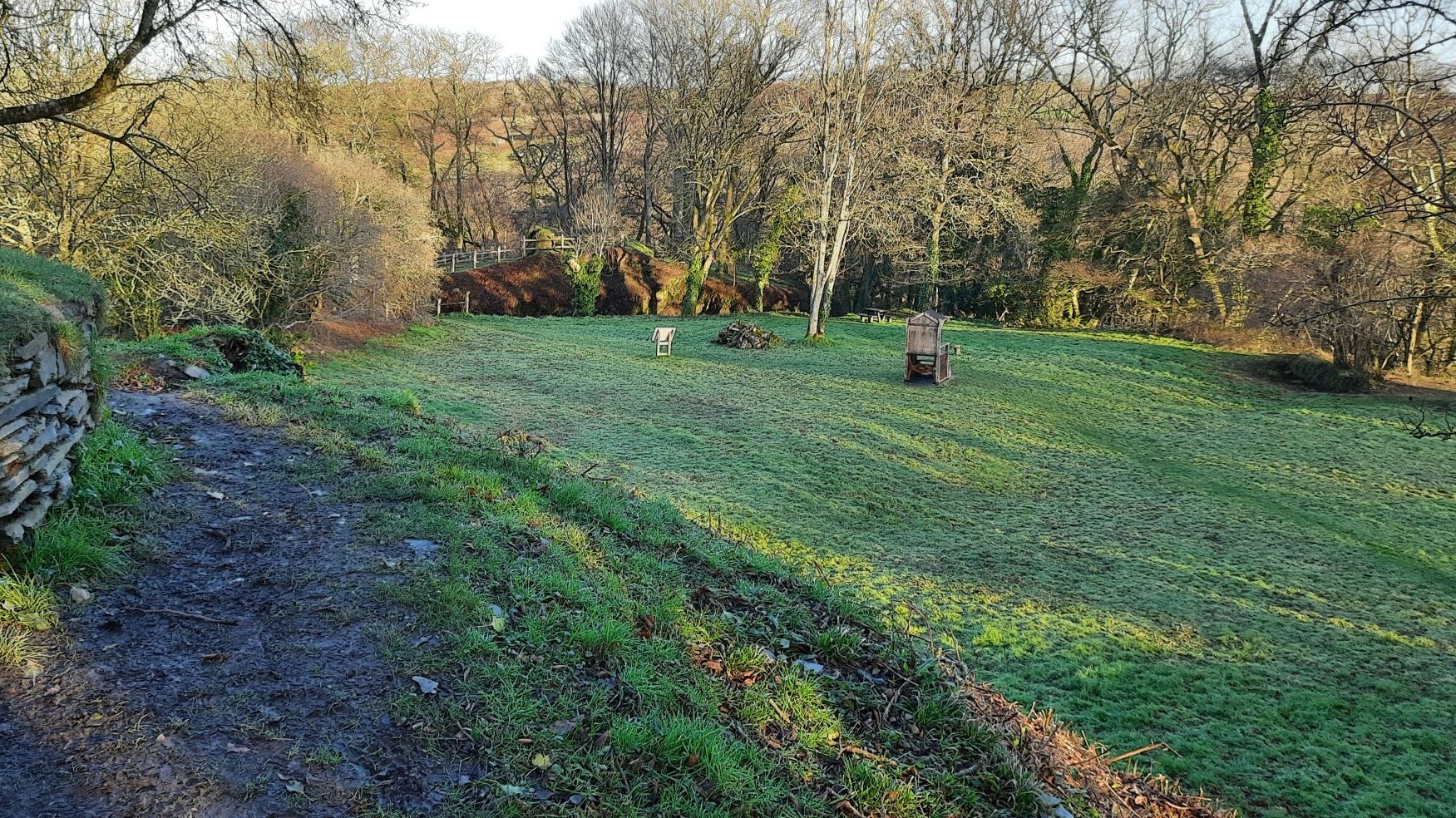
Protected by banks and walls on two sides, and steep slopes on the other two, the castle’s bailey – the flat area watched over by the towers – was where the daily life of the castle took place.
Halls, houses, stables, and workshops occupied this space. At first they were made of wood, but later more strongly built in stone.

Banks and ditches

The first part of the castle to be built was the motte, a mound of earth with a lookout tower on top. Defensive banks and ditches surrounded the motte and the bailey. Later in the castle’s life, this round tower was rebuilt in stone and used also as living quarters.
Now only the base of the tower can be seen.

Latest news and articles
-
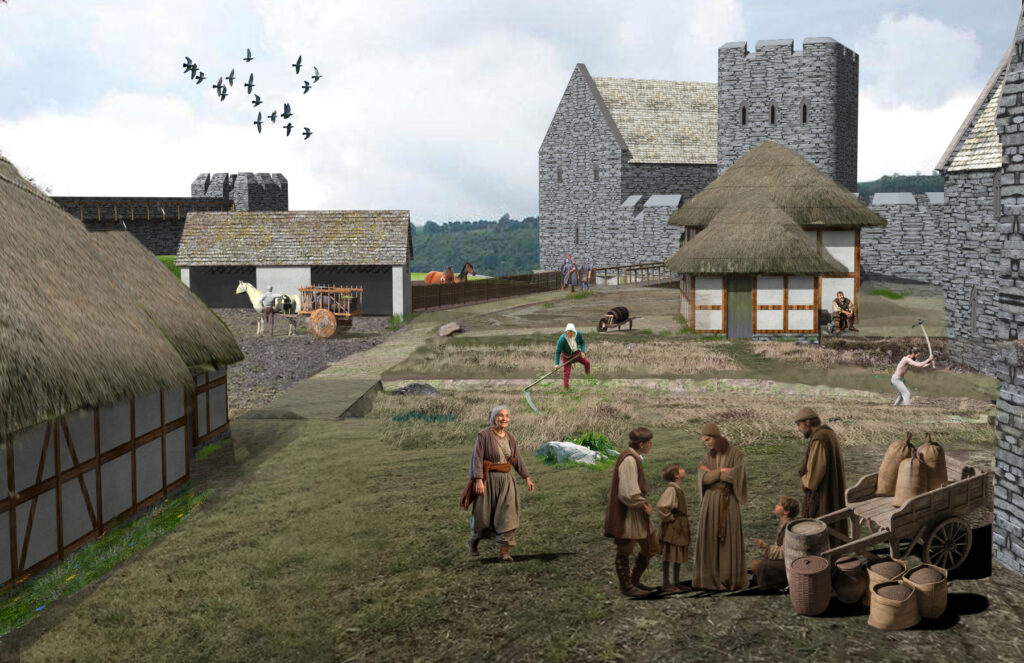 Virtual modeladmin14 Jun 2025John Brandrick, of the Friends of Whitland Abbey, has been very kindly creating a virtual model of Nevern Castle.
Virtual modeladmin14 Jun 2025John Brandrick, of the Friends of Whitland Abbey, has been very kindly creating a virtual model of Nevern Castle.
(John's speciality is making models of the workings of old mills. He has visited many mills around Britain.) -
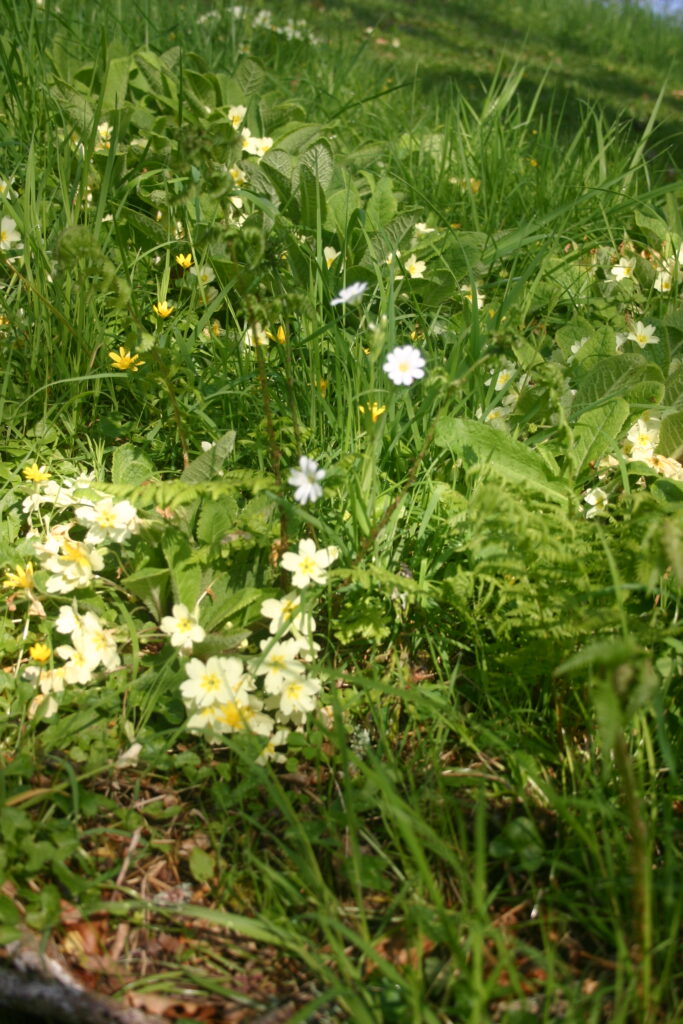 AGM June 2025Friends of Nevern Castle12 Jun 2025The Friends of Nevern Castle held their Annual General Meeting on 11th June 2025 at Nevern Village Hall.
AGM June 2025Friends of Nevern Castle12 Jun 2025The Friends of Nevern Castle held their Annual General Meeting on 11th June 2025 at Nevern Village Hall.
We discussed what should be done with the artefacts discovered during the archaeological digs; progress towards refurbishing the interpretation materials; school and other visits; maintenance of the site and improvements to public access. -
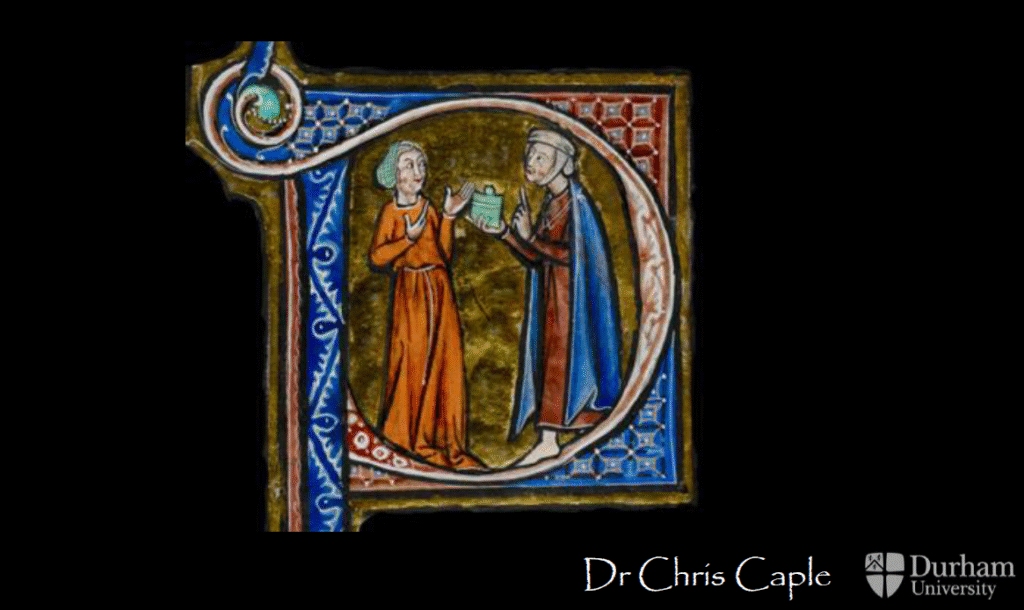 Angharad’s lockChris Caple12 Jun 2025The excavations at Nevern Castle 2008-2018 unearthed two plate locks, three barrel padlocks and shackles, 14 pieces of barrel padlocks, and 14 fragments of keys; evidence of an unusually large number of locks.
Angharad’s lockChris Caple12 Jun 2025The excavations at Nevern Castle 2008-2018 unearthed two plate locks, three barrel padlocks and shackles, 14 pieces of barrel padlocks, and 14 fragments of keys; evidence of an unusually large number of locks.
Lots of locks indicates mistrust and a fear of theft. The community of people present in the castle were like a small town. Most of them would have secured their limited possessions in a small chest secured with a padlock. -
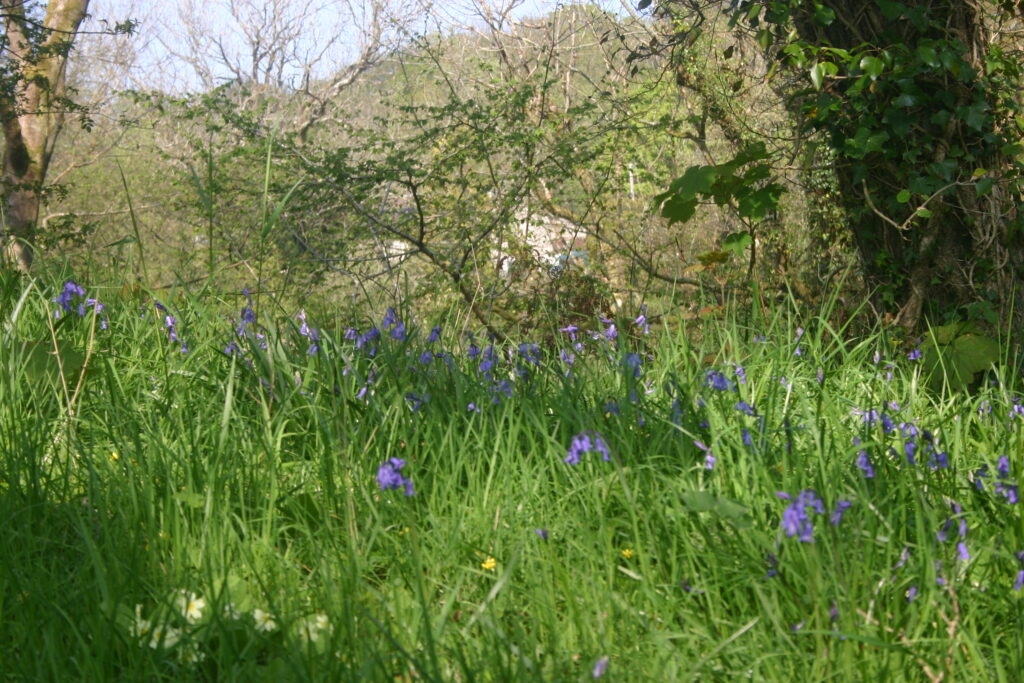 Botanical surveyadminBluebells seen in the plant survey at Nevern Castle April 202512 Jun 2025On 24th April 2025, local ecologist Steve Halton undertook a detailed survey of plant species at the site of Nevern Castle.
Botanical surveyadminBluebells seen in the plant survey at Nevern Castle April 202512 Jun 2025On 24th April 2025, local ecologist Steve Halton undertook a detailed survey of plant species at the site of Nevern Castle.
73 species were noted. -
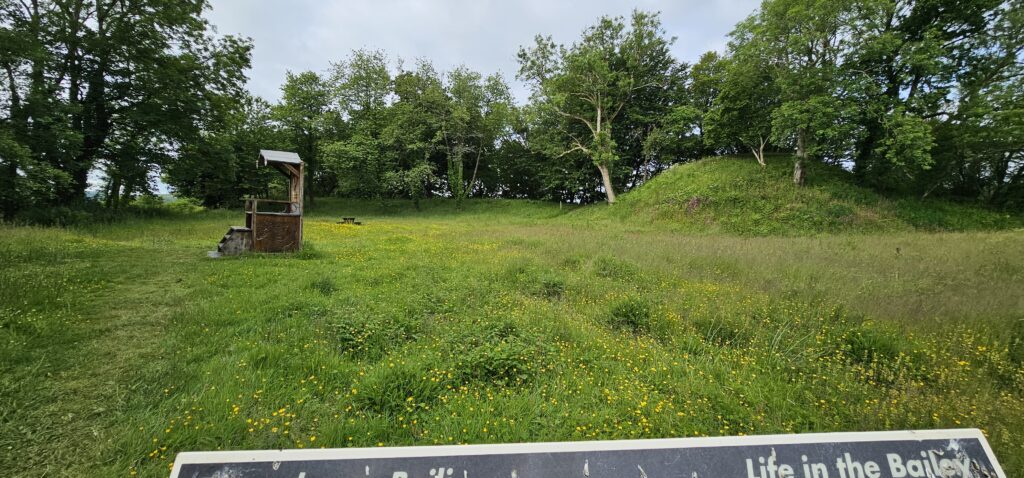 Vegetation managementNevern Community CouncilGrass and wildflowers in the Bailey in summer12 Jun 2025Vegetation management is important to enhance the setting of the monument. By 2023, the Nevern Castle site was difficult for visitors to understand as the vegetation had grown tall, obscuring the features such as the motte and Square Tower, and their relationship to one another. A programme of scrub clearance in 2023 and 2024 (carried out by Pembrokeshire Coast National Park) has opened up vistas and enabled a clearer view of the motte, inner castle and ditches.
Vegetation managementNevern Community CouncilGrass and wildflowers in the Bailey in summer12 Jun 2025Vegetation management is important to enhance the setting of the monument. By 2023, the Nevern Castle site was difficult for visitors to understand as the vegetation had grown tall, obscuring the features such as the motte and Square Tower, and their relationship to one another. A programme of scrub clearance in 2023 and 2024 (carried out by Pembrokeshire Coast National Park) has opened up vistas and enabled a clearer view of the motte, inner castle and ditches.
The areas of grassland around the Castle Motte and Bailey, and the ditches and surrounding areas, are under conservation management to increase the area’s biodiversity. -
 Gerald’s horse harness pendant?Chris Caple15 Mar 2025This horse harness pendant was recovered from the ditch beside the road just inside the gate of Nevern Castle. Might it have been dropped by Gerald of Wales?
Gerald’s horse harness pendant?Chris Caple15 Mar 2025This horse harness pendant was recovered from the ditch beside the road just inside the gate of Nevern Castle. Might it have been dropped by Gerald of Wales?
Figure 1: -
 The Rhys Coat of ArmsFriends of Nevern Castle16 Feb 2025While you're in the bailey of Nevern Castle, take a look at the back of the Throne (built around 2000 and diligently restored 2021-4 by Patrick Beaumont). You'll see two escutcheons - coats of arms on shields. The one with two red bars is that of the FitzMartins, the Norman lords who first built the castle; the other has a lion and three ravens, and is supposed to represent the Lord Rhys.
The Rhys Coat of ArmsFriends of Nevern Castle16 Feb 2025While you're in the bailey of Nevern Castle, take a look at the back of the Throne (built around 2000 and diligently restored 2021-4 by Patrick Beaumont). You'll see two escutcheons - coats of arms on shields. The one with two red bars is that of the FitzMartins, the Norman lords who first built the castle; the other has a lion and three ravens, and is supposed to represent the Lord Rhys.
But we've recently discovered that the lion and three ravens actually belonged to a different and distantly related Rhys, a couple of centuries later. -
 Maintenance workadminWinter view of Carningli from the bailey14 Dec 2024Pembrokeshire Coast National Park Authority, who maintain the Castle site on behalf of the owner, Nevern Community Council, have sent an update on recent and planned work at the Castle.
Maintenance workadminWinter view of Carningli from the bailey14 Dec 2024Pembrokeshire Coast National Park Authority, who maintain the Castle site on behalf of the owner, Nevern Community Council, have sent an update on recent and planned work at the Castle.
Planned for early 2025: -
 Contour mapadmin6 Dec 2024We have been given a detailed elevation map of the castle, created from a LIDAR survey taken in 2023. LIDAR is effective at finding the height of the ground (despite tree cover) in high resolution.
Contour mapadmin6 Dec 2024We have been given a detailed elevation map of the castle, created from a LIDAR survey taken in 2023. LIDAR is effective at finding the height of the ground (despite tree cover) in high resolution.
The contours are derived from the LIDAR data. In this view, they are superposed on a section of the OpenStreetMap. -
 Mugs!Friends of Nevern Castle31 Oct 2024There are now Nevern Castle mugs for sale!
Mugs!Friends of Nevern Castle31 Oct 2024There are now Nevern Castle mugs for sale!
Buy one at our online shop, where you can also buy copies of the Nevern Castle guidebook.


Images © Dr Chris Caple except where noted otherwise.
[PCNPA]: © Pembrokeshire Coast National Park Authority
